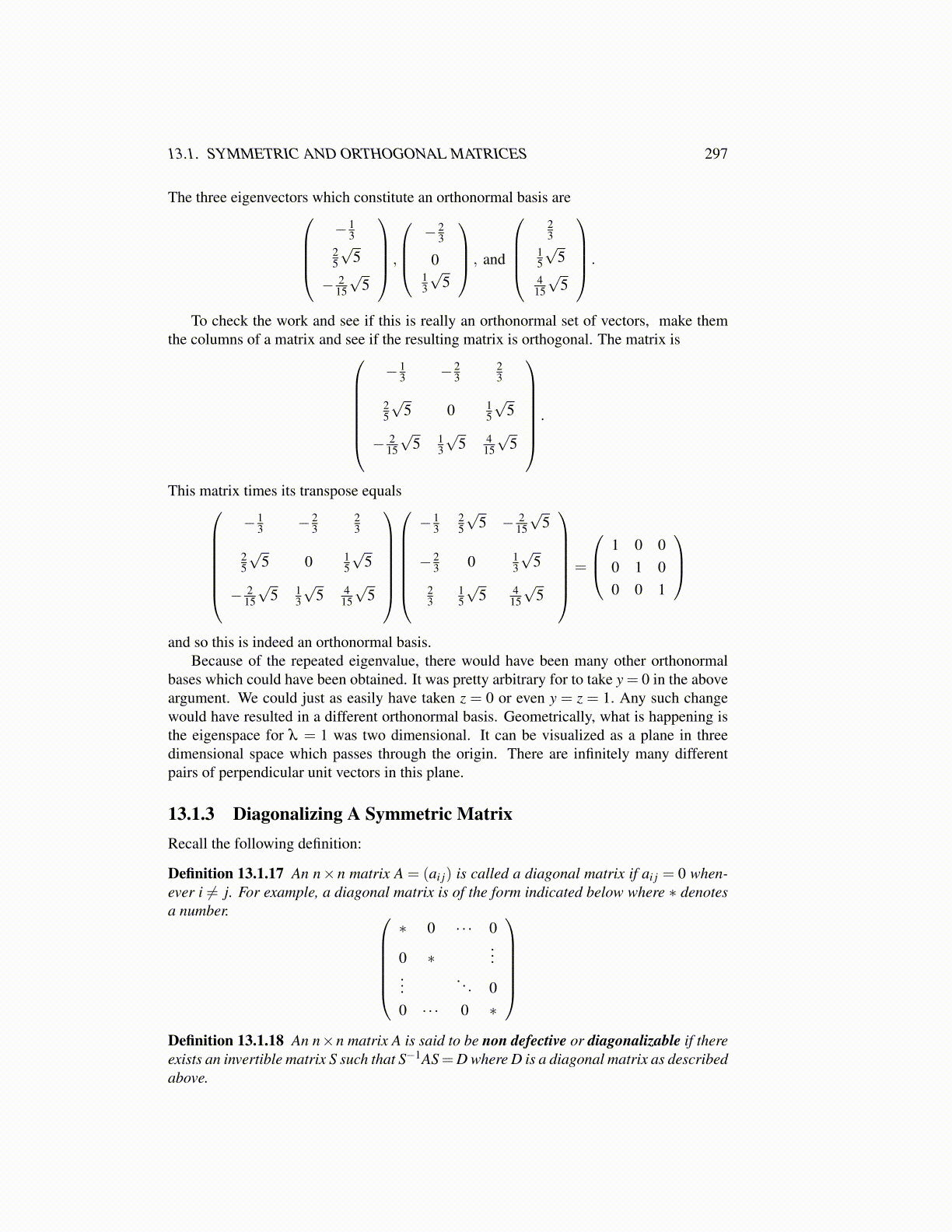
13.1. SYMMETRIC AND ORTHOGONAL MATRICES 297
The three eigenvectors which constitute an orthonormal basis are− 1
325
√5
− 215
√5
,
− 2
3
013
√5
, and
23
15
√5
415
√5
.
To check the work and see if this is really an orthonormal set of vectors, make themthe columns of a matrix and see if the resulting matrix is orthogonal. The matrix is
− 13 − 2
323
25
√5 0 1
5
√5
− 215
√5 1
3
√5 4
15
√5
.
This matrix times its transpose equals− 1
3 − 23
23
25
√5 0 1
5
√5
− 215
√5 1
3
√5 4
15
√5
− 1
325
√5 − 2
15
√5
− 23 0 1
3
√5
23
15
√5 4
15
√5
=
1 0 00 1 00 0 1
and so this is indeed an orthonormal basis.Because of the repeated eigenvalue, there would have been many other orthonormal
bases which could have been obtained. It was pretty arbitrary for to take y = 0 in the aboveargument. We could just as easily have taken z = 0 or even y = z = 1. Any such changewould have resulted in a different orthonormal basis. Geometrically, what is happening isthe eigenspace for λ = 1 was two dimensional. It can be visualized as a plane in threedimensional space which passes through the origin. There are infinitely many differentpairs of perpendicular unit vectors in this plane.
13.1.3 Diagonalizing A Symmetric MatrixRecall the following definition:
Definition 13.1.17 An n×n matrix A = (ai j) is called a diagonal matrix if ai j = 0 when-ever i ̸= j. For example, a diagonal matrix is of the form indicated below where ∗ denotesa number.
∗ 0 · · · 0
0 ∗...
.... . . 0
0 · · · 0 ∗
Definition 13.1.18 An n×n matrix A is said to be non defective or diagonalizable if thereexists an invertible matrix S such that S−1AS=D where D is a diagonal matrix as describedabove.